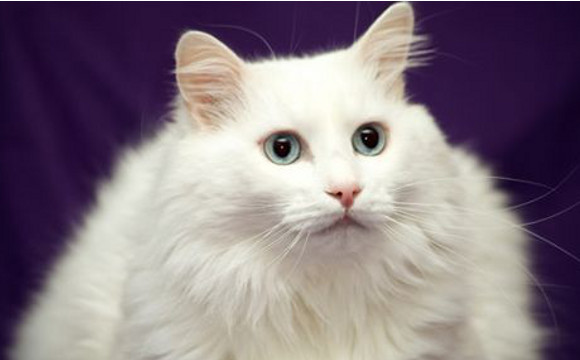Introduction
The Turkish Angora cat, known for its grace and elegance, has a rich history and captivating personality. This breed is highly valued for its intelligence, affectionate nature, and unique physical traits.
History and Origins
The exact origins of the Turkish Angora are unclear. One theory suggests that the breed developed from the African wildcat, like most domestic cats. The recessive longhair gene likely appeared spontaneously centuries ago, perpetuated through breeding in isolated regions like Turkey’s Lake Van area. Historical records mention longhaired cats in Turkey and its neighboring areas for centuries.
Mohammed, the founder of Islam, was said to have loved a Turkish Angora named Muezza. The breed’s name was originally “Ankara” cats, reflecting the Turkish capital’s name, which changed from Angora to Ankara in 1930.
By the late 1500s, longhaired cats from Turkey, Persia, Russia, and Afghanistan were imported to Britain and France, making their way to Europe by the early 1600s and America by the late 1700s. Despite early popularity, the Turkish Angora’s presence waned as the Persian breed became more favored. By the early 1900s, the breed had nearly vanished outside Turkey.
The Turkish government, alongside the Ankara Zoo, began a breeding program in the early 1900s to preserve the pure white Angoras with blue and amber eyes, particularly the odd-eyed ones believed to be touched by Allah. In 1962, Liesa F. Grant successfully imported a pair of these cats to America, reviving interest in the breed. By 1973, the breed was recognized for championship status by the CFA, initially only in white. Today, all North American registries accept Turkish Angoras, with growing registration numbers.
Characteristics and Temperament
Turkish Angoras are known for their strong bond with their owners, often shadowing them and engaging in conversations. They are playful, mischievous, and enjoy interactive activities. Their elegant, flowing movement is a sight to behold, and they are known for their problem-solving skills and desire to control their environment. While they tolerate being held for short periods, they prefer playing and showing off their antics.
Interestingly, the Turkish Angora, along with the Turkish Van, is known for its swimming abilities. Not all Angoras love water, but many enjoy it to varying degrees.
Physical Traits and Grooming
While traditionally known for their pure white coats, Turkish Angoras come in various colors today. However, the white, blue-eyed Angoras can be prone to deafness, a trait linked to the dominant W gene responsible for the white coat and blue eyes. This gene can cause degenerative, hereditary deafness affecting the ear’s cochlea. Odd-eyed Angoras are generally deaf in one ear on the blue-eyed side. Despite this, hearing-impaired Angoras adapt well and enjoy life as much as their hearing counterparts.
Care and Maintenance
Turkish Angoras require moderate grooming to maintain their silky coats. Regular brushing helps prevent matting and reduces shedding. They are generally healthy and hardy, but regular vet check-ups are essential to monitor their hearing and overall health.
These cats are excellent with children and other pets, making them a wonderful addition to families. Their playful nature and affectionate demeanor endear them to many, providing endless entertainment and companionship.
Conclusion
The Turkish Angora is a breed with a storied past and a bright future. Their beauty, intelligence, and affectionate nature make them cherished pets. Whether engaging in playful antics or curling up for a cuddle, Turkish Angoras bring joy and elegance to any household.
Key Points
- Origins: Likely descended from African wildcats; longhaired gene appeared centuries ago.
- History: Imported to Europe in the 1500s, nearly vanished by 1900s, revived in the 1960s.
- Personality: Intelligent, playful, affectionate, strong bond with owners.
- Physical Traits: Silky coat, various colors, some prone to deafness.
- Care: Moderate grooming, regular vet check-ups, good with children and pets.
For more details, visit the original article.

